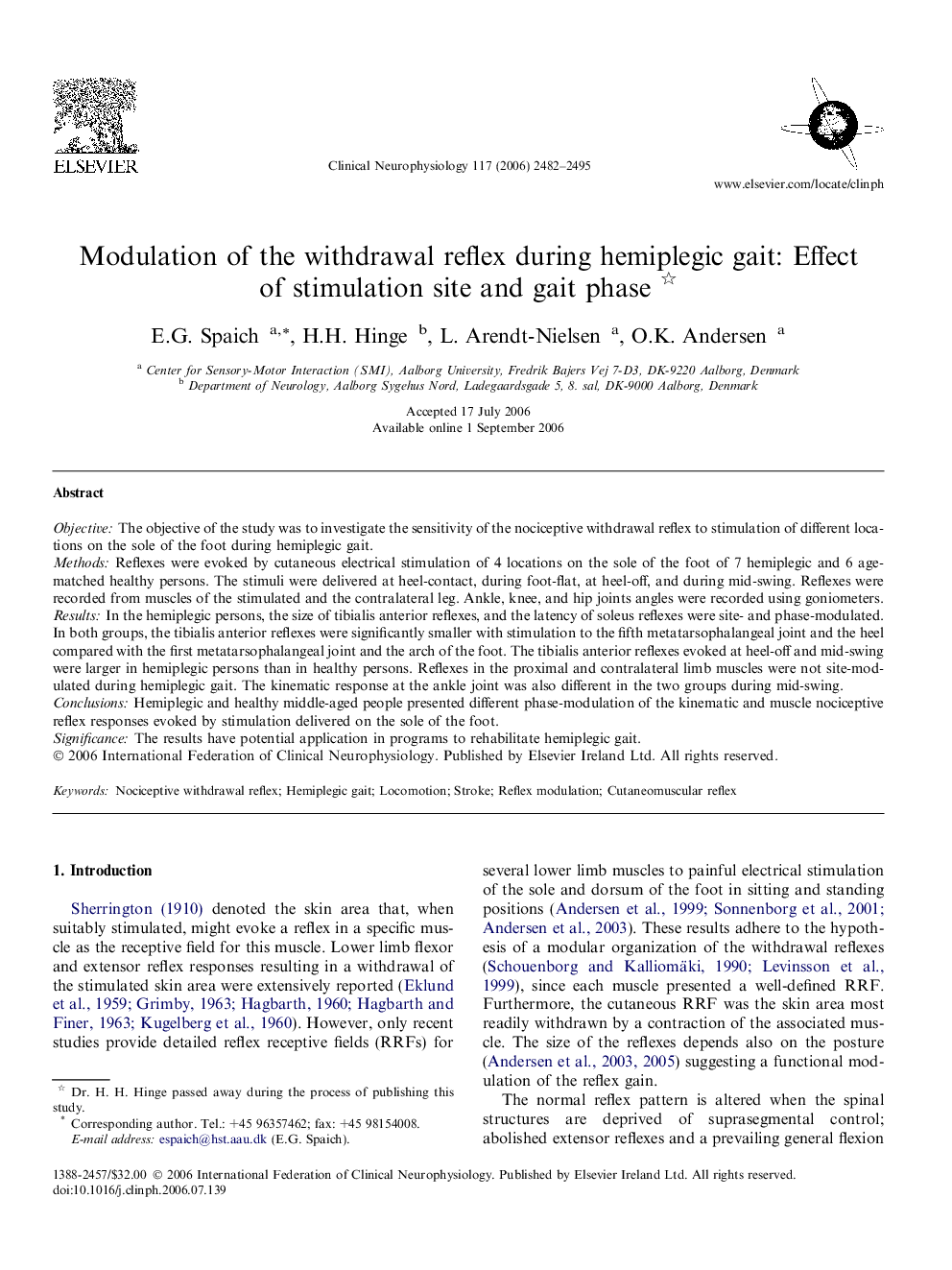| Article ID | Journal | Published Year | Pages | File Type |
|---|---|---|---|---|
| 3048497 | Clinical Neurophysiology | 2006 | 14 Pages |
ObjectiveThe objective of the study was to investigate the sensitivity of the nociceptive withdrawal reflex to stimulation of different locations on the sole of the foot during hemiplegic gait.MethodsReflexes were evoked by cutaneous electrical stimulation of 4 locations on the sole of the foot of 7 hemiplegic and 6 age-matched healthy persons. The stimuli were delivered at heel-contact, during foot-flat, at heel-off, and during mid-swing. Reflexes were recorded from muscles of the stimulated and the contralateral leg. Ankle, knee, and hip joints angles were recorded using goniometers.ResultsIn the hemiplegic persons, the size of tibialis anterior reflexes, and the latency of soleus reflexes were site- and phase-modulated. In both groups, the tibialis anterior reflexes were significantly smaller with stimulation to the fifth metatarsophalangeal joint and the heel compared with the first metatarsophalangeal joint and the arch of the foot. The tibialis anterior reflexes evoked at heel-off and mid-swing were larger in hemiplegic persons than in healthy persons. Reflexes in the proximal and contralateral limb muscles were not site-modulated during hemiplegic gait. The kinematic response at the ankle joint was also different in the two groups during mid-swing.ConclusionsHemiplegic and healthy middle-aged people presented different phase-modulation of the kinematic and muscle nociceptive reflex responses evoked by stimulation delivered on the sole of the foot.SignificanceThe results have potential application in programs to rehabilitate hemiplegic gait.
